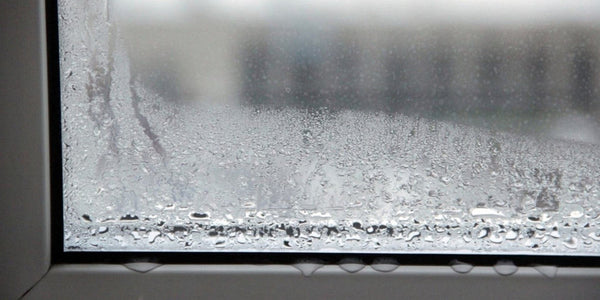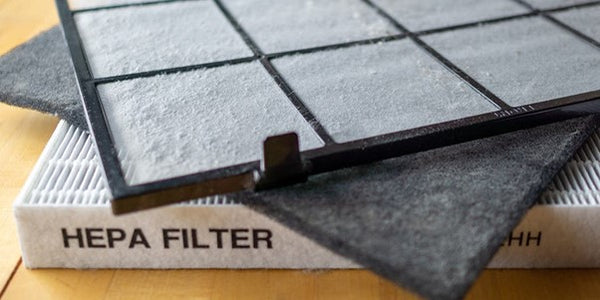There's nothing better than spending time outside with friends and family, but it’s not as enjoyable when you’re freezing in the garden. That’s where Devola patio heaters come in, providing the warmth you need to enjoy your outdoor space comfortably. They’re perfect for both homes and commercial spaces like bars, cafés, restaurants, terraces, and warehouses.

How do patio heaters work?
Electric patio heaters are an efficient way to warm your space. Powered by infrared elements, they heat people directly rather than the surrounding air, minimising waste. They are a top choice for homeowners due to their efficiency and zero carbon emissions. If you need to quickly and easily heat your garden, electric patio heaters are an excellent option. Many models are also suitable for both indoor and outdoor use. .
Important considerations for your patio heater
When you are choosing a Patio Heater, there are key considerations you should take into account to purchase the right one for you.
Placing it in the Right Area

The placement of the Patio Heater in your outdoor space is important. If you place it too far away, the heater will be less effective. Patio heaters should be at least 1 metre away from anything flammable and kept on a flat surface, so they don't get knocked over easily. Make sure the patio heater is well out of reach of children and pets.
At Devola, we offer a variety of patio heaters, including wall-mounted, floor-standing, and stand-mounted options, giving you multiple ways to heat your outdoor space.
Price
Patio heaters come in a range of prices depending on their type, size, and features. At Devola, we offer affordable, high-quality options for every budget. To make our patio heaters as energy efficient as possible, they come with timers, heat settings, open window detection and smart home compatibility, meaning you can operate the heater from your device whenever you need it, saving you energy and cost.
We recommend - The Devola 1.2KW Indoor and Outdoor Wi-Fi Radiant Heater efficiently heats spaces up to 14m² and works indoors or outdoors with its IP44 rating. It heats quickly, features energy-saving mode to run at half power, and includes open window detection, shutting off if the temperature drops by 3°C in 2 minutes. Also available in a 1.8kW model.
Environmental cost and maintenance

Unlike gas patio heaters, Devola patio heaters produce significantly less CO₂ . Furthermore, gas heaters require frequent refills of propane or butane tanks, which can be costly and inconvenient. In contrast, Devola electric heaters have a lower environmental impact and are easier to maintain since there is no need for fuel refills.
Before buying a patio heater, be prepared for some regular maintenance. This includes shielding it from the elements and storing it when not in use.
Advantages of patio heaters
-
Patio heaters are good for outdoor gatherings with friends and family when it's cold
-
They come in multiple size and design options
-
Patio heaters are affordable, with our price range is between £80-200 for most of our units
-
They can heat a large area if required
-
They are portable, so you can find the perfect spot for it in your space
Features
-
Heat Output - The heat output of a patio heater depends on the power rating of the device. The level of heat coverage will be provided in either BTU or kW, and should be calculated to your needs.
-
Room Size - The room size of the patio heater determines the heat coverage for your room. Generally, the larger the patio heater, the higher the room size it will heat.
-
Emitter screens - Large emitter screens make patio heaters more comfortable to use around tables, as they absorb some of the heat. You can also tilt some models which allows you to direct the heat as required.
-
Material - The materials used in construction of a patio heater are steel, stainless steel and aluminium.
-
Power connection - Electric patio heaters need to be plugged in. Consider the availability and placement of power outlets when choosing a patio heater.
-
Safety features - Some patio heaters come with built-in safety features such as anti-tilt shut-off, which automatically turns off the heater if it is knocked over. This feature can help prevent accidents and potential fires.
Our collection
Devola has a variety of high-quality patio heaters with modern designs and features to choose from, so you can enjoy entertaining outside even when the temperature drops.
-
Electric patio heaters Our electric patio heaters are a popular choice for their convenience and ease of use. They plug in easily and provide instant, emission-free heat. Our range includes ceiling-suspended, wall-mounted, and splicing models.
-
Smart home Patio heaters provide a high-tech solution for controlling your outdoor heating. With the use of smart home technology, you can adjust the temperature and settings remotely through your smartphone or devices.
-
Floor standing patio heaters are a popular choice for those looking to add warmth and ambiance to their outdoor space. These heaters can be placed on any flat surface and come in various styles.
-
Stand mounted patio heaters are another option for those who want a portable patio heater to provide warmth wherever it's needed. They have an adjustable height and head angle.
Frequently Asked Questions
Q. How high from the ground should my patio heater be fixed?
A. Most patio heaters should be mounted from 2.2-2.5 metres high from the ground. Larger 4 kW heaters may need to be mounted up to 3.5 metres. This will be specified in the included instructions.
Q. Can I mount inside my gazebo?
A. Some freestanding patio heaters maybe be able to be used in temporary structures like gazebos, but you should be careful to ensure there is proper clearance from any materials and circulation.
Q. Can I mount my Patio Heater indoors?
A. Patio Heaters can be used indoors and can provide instant heat at the touch of a button.
Q. Do I need an electrician to install my Patio Heater?
A. A basic patio heater plugs into a socket, so if you feel confident about safely mounting your heater to the wall you don't need to employ an electrician. If your heater is above 3 kW, linking to multiple heaters, or hardwired into your electricity supply, then you will need an electrician.
Q. What level of clearance do I need around the Patio Heater?
A. You will need approximately 30 cm below a ceiling or away from the corner of the wall.
Q. If it's still raining, can I still install the Patio Heater outside?
A. Most Patio Heaters are IP65 rated, which will make them weather resistant, so they can be installed in any outdoor situation.
Q. Can electric heaters be wired together, and plugged into a standard 13A socket using a standard three pin plug?
A. Yes, they can be wired together, as long as the combined power they are drawing doesn't exceed 13 Amps. The maximum power that can be put through a conventional UK fused plug socket is 13 Amps.
Q. How much do Patio Heaters cost to run?
A. A number of factors determine the running costs, such as: efficiency, the level of heat you need, and your electricity tariff. To work it out simply take the Wattage of your heater, times it by the amount of time you want to run it for to get the kilowatt-hours and then find the price you pay for your electricity or gas. For example, if you want to run your 2kW heater for 6 hours you have 16kWh. If you pay 52 p/kWh for electricity, you'll be paying £8.32 to run your heater.
*Accurate as at 01/01/2026







